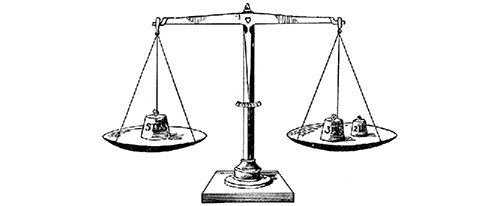
Measuring Up
Every time we write one of our books we always learn something, even after all these years in the kitchen. In Vol. N° 6, The Grocery Store, we baked up a storm of desserts. Baking is its own realm of cooking, requiring close attention to every detail. We are not particularly nudgey cooks, so we usually shy away from weighing ingredients—too clinical for us. But the truth is, sometimes weighing is crucial to achieve consistent results. For instance, even types of flour, like cake and all-purpose, differ in weight and volume: a cup of cake flour weighs about 4 ounces while a cup of all-purpose flour weighs 5 ounces. And depending on how you scoop the flour (compressing it or not) your measurements can be off by as much as one-quarter cup. The critical thing in baking is to get the right ratio of fat to flour to leavening, so measurements really matter. Serious bakers prefer to measure by weight rather than by volume. They even claim it is easier and less messy to weigh ingredients like shortening than to pack them into a measuring cup. To put an even finer point on it, some bakers prefer to use the more precise metric system—grams instead of ounces.
Now that we are swinging into a new season, all the berries of late spring and early summer will soon be in the garden and at the market. Since we are big fans of small-batch preserves, we are already rounding up jars and lids. Strawberries, the first of the spring berries, are packed and sold by the pint and quart. But is a pint really two cups? Actually, it varies wildly because it's hard to measure a cup of strawberries accurately. The size and shape of the berries makes it nearly impossible to get the same amount in a cup each time. But one pound of berries will always be consistent, so it makes sense to weigh the fruit rather than measure it by volume. Generally speaking, a 1-pint basket of strawberries should weigh about 8 ounces, while a quart should weigh about 1 pound.
We use a small digital scale that measures either in grams/kilograms or in ounces/pounds. We also have a variety of glass liquid measuring cups and nested dry measuring cups. If a recipe calls for 4 ounces of a liquid, use your liquid measuring cup. If it calls for ½ cup of a dry ingredient, use a dry measuring cup. And if it calls for 4 ounces of a nonpourable ingredient, then use your scale to weigh it.
